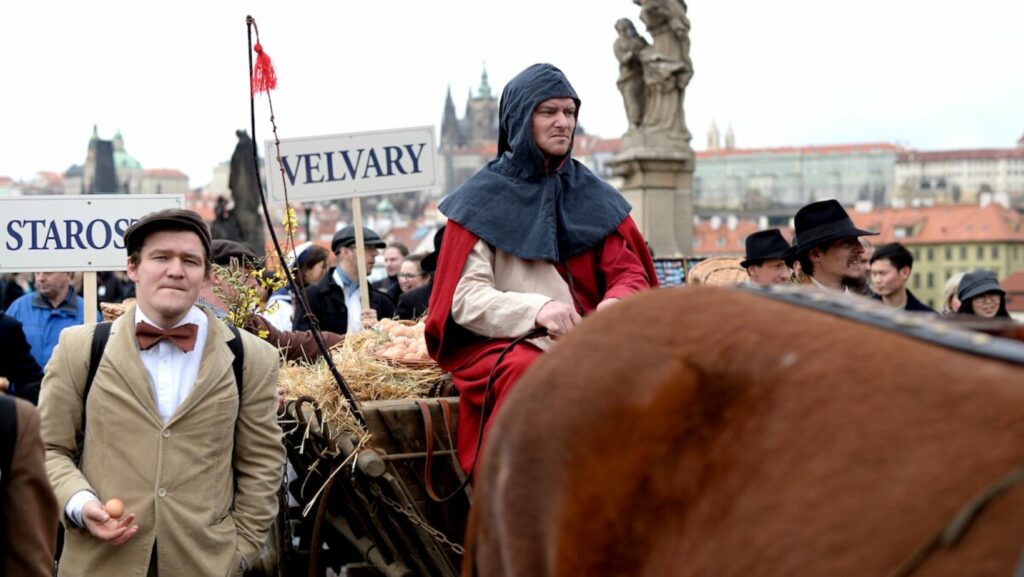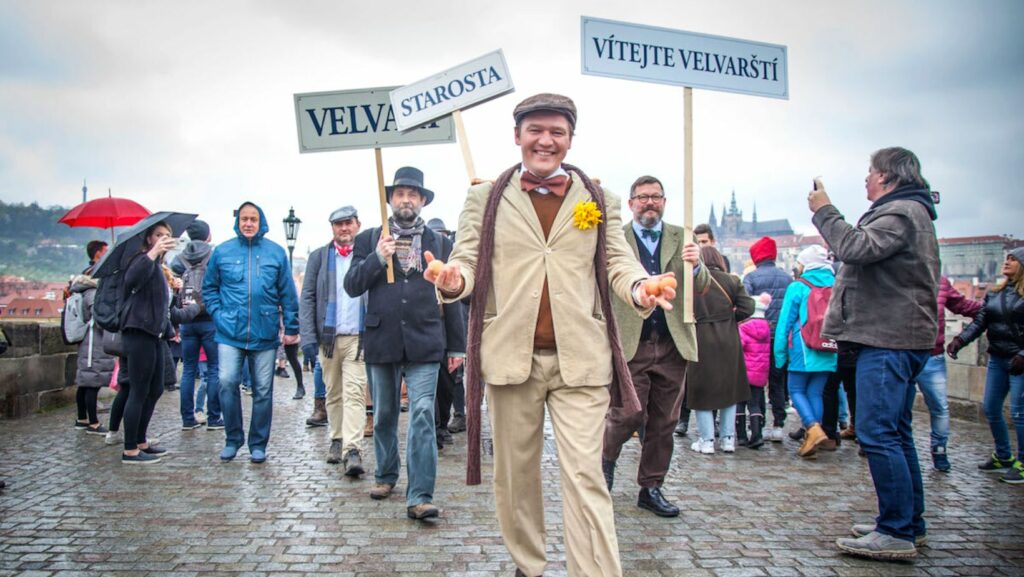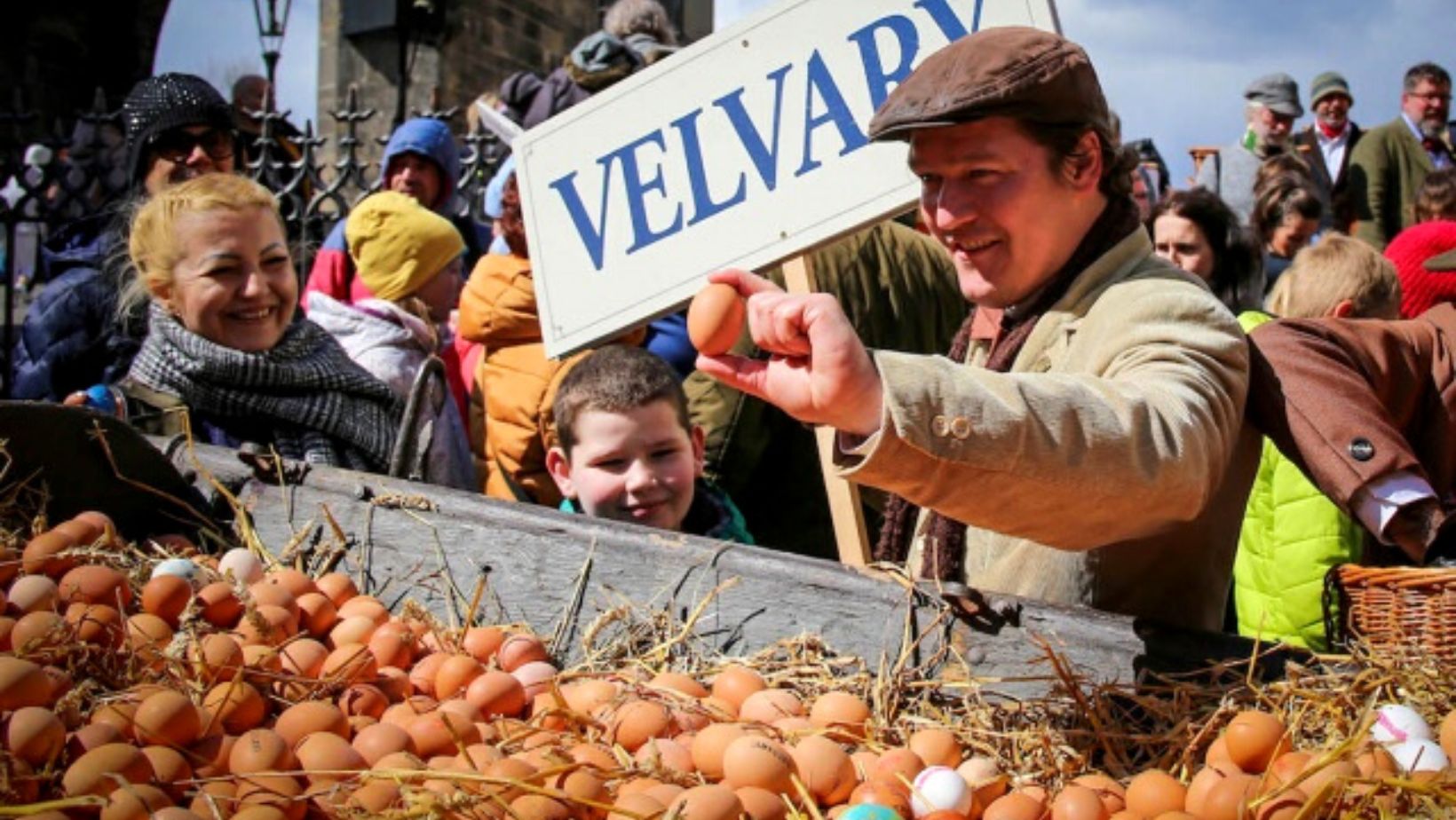One of the most renowned stories associated with Prague’s Charles Bridge will be brought to life.
The Vajíčkobraní, a medieval costumed parade of peasants handing over a cartload of boiled eggs from the municipality of Velvara to the Prague mayor, will take place there on March 24 at 13:00.
According to tradition, the bridge’s architects chose to use eggs, milk, and wine in the mortar to increase the strength of the bridge (just like raw egg is added to meatballs to make them firmer).
Since there were not enough eggs in Prague, all towns in Bohemia and Moravia had to contribute. The instructions gave rise to misunderstandings: some cities sent cheese and cottage cheese.
The residents of Velvary sent the eggs hardboiled, to ensure that the fragile cargo didn’t break on the way to Prague, thus earning a place in history for the shame and ridicule they had to endure from Prague residents.
A recent carried out in the laboratory of the Institute of Biochemistry and Microbiology at the University of Chemical Technology showed that the legend about eggs being added to the Charles Bridge mortar was based on reality, Týden writes.
Štepánka Kučková from the University of Chemistry and Technology said that the results of the analysis showed that egg proteins were detected in the original mortar. The practice was not uncommon in the Middle Ages, when substances like milk or curd, ox blood, bile, or even beer and wine were used to either harden or soften the mortar used in constructions.

The parade will begin at 13:00 from the Malostranská tower. Radim Volak, the present mayor of Velvar, will also take part.
The Charles Bridge Museum is in charge of organizing the event. The goal is to keep Prague’s historical customs alive and to keep residents informed about old Prague tales.
On that day, visitors can also see the Easter display at the Charles Bridge Museum.

Support Prague Morning!
We are proud to provide our readers from around the world with independent, and unbiased news for free.
Our dedicated team supports the local community, foreign residents and visitors of all nationalities through our website, social media and newsletter.
We appreciate that not everyone can afford to pay for our services but if you are able to, we ask you to support Prague Morning by making a contribution – no matter how small 🙂 .




